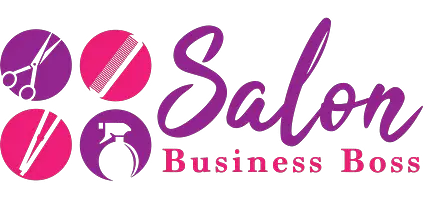One of the most stressful and puzzling things when starting a business is figuring out how to get paid — or, in other words, how to pay yourself. That’s the entire point of even starting [let alone running] a business, right? And yet, the answer to how to make that happen is so often obscured behind an array of numbers, charts, orders, bills, receipts, and other baffling, horribly overwhelming financial transactions. This stuff can feel deeply intimidating when you’re still new to the game. Therefore, it’s extremely understandable that so many people looking to brush off and apply their entrepreneurial chops to their own hair salon aren’t altogether sure where to start when it comes to establishing their own income through an independent venture (such as starting a hair salon). Fortunately, we have you covered.
The three main ways in which salon owners pay themselves are through —
- Services Provided, which include any hair styling, cutting, or other cosmetic services provided to customers by the salon,
- Tips by clients in addition to the standard fee(s) charged for any services provided to customers for services the salon owner provides themselves, and
- Salaries and Dividends, which a salon owner can pay themselves by applying to be a sole trader, or else by registering their salon as a limited company.
Combined, these three sources of income work together to pay salon owners a sustainable living and support their businesses moving forward.
Services Provided
The number one thing any salon needs to actually run?
Services!
Without the services provided, a salon is nothing. Without the services provided, a salon has no point! But you already know this.
Services provided can include [but are not limited to]: hair coloring, hair cutting, hair styling, hair treatments, head massages, and any sort of facial threading.
In pricing your services, additional things to consider (in addition to the cost of the actual labor involved by the person performing the services provided) are —
1) The prices of the products used,
2) The prices of any tools, devices, and appliances you may need to provide said services,
3) The price of any necessary surfaces and furniture needed while providing these services,
4) The prices of upkeep for all these aforementioned items,
5) The price of upkeep for the salon itself,
6)The costs of your salon’s utility, rent, etc. bills, and finally,
7) Your employees’ salaries.
Be sure that when all is said and done, there’s enough money there not just to take care of the salon and your employees, but also that there’s a sufficient amount of money set aside for you to [ethically] pocket and use to support yourself! After all, services provided are such a huge part of what makes a salon run and, better yet, pay the person running it.
Tips
In this day and age, tips are more vital than ever. Not only do many salon owners and employees rely heavily on the tip’s customers give them, but most customers consider it the norm to tip those who provide them with any good or service that involves a significant amount of labor. This, of course, includes salon services!
While tips are generally a given with most salon customers, the amount is always up for debate. Some people go into a salon with a minimum tip they expect to pay, but with flexibility to increase that number depending on how pleased they are with the service that day. Some clients already know how much they’re planning to tip in advance, regardless of how things go. Others yet might walk in, get their services done, and not determine their tip amount until it’s time to pay — at which point the quality of their service will kick in as they decide on their final amount. Conversely, some customers might not tip at all.
The best you can do with customers who have a preset tip amount already set aside is give them terrific service regardless so that they continue to return for more. Of course, you probably have no way of knowing which customers take which approach to tips — so your best bet is always to go above and beyond for every client who walks into your salon! There’s always a very good chance you’ll end up with a customer who won’t decide how much they’d like to tip until they’re already being rung up and on their way out — so always ensure they leave that chair feeling fresh, excellent, confident, and beautiful!
Regarding those customers who tip too little (or not at all), they can be a bit difficult to stomach. Unfortunately, they’re also a given part of the service industry that all business owners must eventually learn to expect and accept. They’re a standard — although unpopular part — of how the service industry runs, and therefore, you should always be prepared to account for their lack of sufficient tip.
For each payment period, it’s safe to assume that there will be a few low or no tippers. Consider this when budgeting, allocating, and distributing your funds. While other customers’ tips, or even just the rate of business and income from your services provided, might be higher than you expected, the lack of tip from a handful of clients may still be enough to make your wallet ache a bit. That’s why it’s always better to expect less — so you don’t accidentally bank on more.
Something many salons do is include a tip chart for their most popular services. They’ll display the pre-calculated prices for a 10%, 15%, and 20% tip so that customers have a bouncing off point and immediate understanding of the salon’s general tipping system and expectations. This usually results in significant, appropriate tips for the services rendered.
Want more information? Check out these books for hair salon owners!
Salaries and Dividends

We all enjoy a little consistency in our finances, and salon owners are no exception! That’s why most, in addition to the aforementioned channels of income, also pay themselves a salary.
Now, you might be wondering — how on earth will I ever manage to pay myself a salary as a salon owner?! Well, it’s much more straightforward than most people realize! The first thing you’ll need to do is determine how much you can make from your salon on a salary basis while still considering other running costs and ensuring that your regularly scheduled cut isn’t so high that it ends up running your business into the ground. Of course, if you’re still starting out as a salon owner, your salary will likely be a lot less than those who started their business a while back. That’s completely natural, and nothing to fret about.
Going about paying yourself a salary isn’t quite as simple as writing yourself a check at the end of the work week. Rather, and depending on the laws in your area and how much you’ve made for the tax year as a business owner, you may very well need to register yourself as a sole trader.
Being registered as a sole trader simply means that you are self-employed, and run your business individually to the extent that you and your business function as a single, joint financial entity. In other words, you (as a sole trader) and your business are considered one and the same under the eyes of the law. There is no legal separation between you — the individual — and your salon — your privately-owned business. While this is a delightfully simplified way of running things, this also means that in the event your salon runs into financial issues, the government is perfectly justified in coming after your personal assets.
Conversely, you can also register your salon as a limited company. As a limited company, the law considers you and your business separate entities. Registering your salon as one is a terrific way to protect your own personal properties, possessions, bank accounts, earnings, and savings in the unfortunate event your salon has financial issues — a major safeguard perk you wouldn’t have as a sole trader. Your and your salons’ assets are legally separated so long as the latter is registered as a limited company.
Moreover, with your salon registered as a limited company, your income doesn’t stop at the profits you make from your services offered, tips, or salary. Rather, you are also able to pay yourself tax-free dividends!
Returning to the matter of paying yourself a salary, one option is paying yourself as you would be paid if you were working for someone else. Depending on where you live and the previous tax year, the first however-many dollars you earn not only involves your National Contribution fee, but also allows you to enjoy a tax-free way to pay yourself while starting out. Eventually, you will have to start paying income tax — but this gives you a much-needed tax-free cushion at the beginning while you’re still establishing the groundwork for your salon.
Other Items Worth Noting
This probably goes without saying, but is still worth mentioning all the same.
As a salon owner, paying yourself isn’t enough. You also have to ensure you’re setting aside and investing enough money back into your salon for it to survive (and even thrive) over a long period of time.
You might be wondering — what about me? What am I supposed to live on?
Shampoo?!
No, no! We promise you there’s no need to live on shampoo. However, in the earlier stages of operating a salon, it might be better to take advantage of any less dire personal circumstances you may be experiencing to ensure the [high] quality of your salon, employees, services provided, and all the items you use to provide said services. While this may be tough to deal with in the short-run, investing in your salon in this manner earlier on in the game can result in major profit, consistent business, and loyal customers later on.
Always remember that salon supplies are expensive — more expensive than the stuff most people buy for themselves on a regular, more individual basis. Furthermore, salons are often known [and get popular] for using the best products around. Some even sell them up at the front for a bit of additional profit!
However, this means that whatever money you make through your salon should be partially invested back into sustaining, restocking, and/or upgrading certain aspects of your business. The same goes for products, appliances, devices, gadgets, chairs, counters, potential beverage offerings, and all the other items that make the salon experience special for your clients.
A cheap, barely functional hair straightener may work in the moment, but is enough to ruin you and your business in the future. All it takes is one customer to either make or break your entire operation.
Related Questions

Running a salon is just so expensive sometimes! How do I save money on salon supplies without cutting back on quality?
First and foremost— don’t worry! You’re not the first person to have this issue, nor will you be the last. Fortunately, many product manufacturers and distributors offer special deals to salons and businesses that they might not to individuals. It also helps to network!
How does having employees factor into my tips as a salon owner?
Of course, your employees deserve their tips. There’s no doubt about that! Something a lot of business owners in the service industry do is have everyone pool their tips together, and then distribute them accordingly— taking a larger, well-earned, and well-deserved cut for themselves as the person in charge.
Looking to start your own Salon? Get the documents you need to get organized and funded here.
Please note: This blog post is for educational purposes only and does not constitute legal advice. Please consult a legal expert to address your specific needs.

About the author. Entrepreneur and Salon Business Fan.
Hi! I am Shawn and I am a happy individual who happens to be an entrepreneur. I have owned several types of businesses in my life from a coffee shop to an import and export business to an online review business plus a few more and now I create online salon business resources for those interested in starting new ventures. It’s demanding work but I love it. I do it for those passionate about their business and their goals. That’s why when I meet a salon business owner, I see myself. I know how hard the struggle is to retain clients, find good employees and keep the business growing all while trying to stay competitive.
That’s why I created Salon Business Boss: I want to help salon business owners like you build a thriving business that brings you endless joy and supports your ideal lifestyle.

